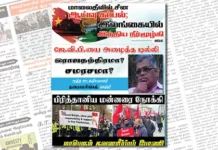Days after the Central Bank of Sri Lanka (CBSL) said that it was awaiting the Reserve Bank of India’s (RBI) approval to designate Indian Rupee (INR) as a foreign currency in Sri Lanka, reports have emerged saying banks from India’s neighbouring island nation have opened special rupee trading accounts, called Vostro accounts.
Sri Lanka had requested the RBI to facilitate and promote trade and tourism in the SAARC region.
What does it mean?
It means that Sri Lankan citizens can now hold $10,000 (INR 8,26,823) in physical form. This also means that Sri Lankans and Indians can use Indian rupees instead of US dollars for international transactions with each other. The Indian government since July this year, has been looking to bring countries that are short of dollars, into its rupee settlement mechanism.
Special rupee accounts for international transactions between designated countries are called Vostro accounts.
Why Sri Lanka is keen to trade in INR?
This is because designating INR as a legal currency in Sri Lanka will provide the country with much-needed liquidity support to help it tide over its economic crisis amid inadequate availability of the US dollar.
With a foreign currency (in Sri Lanka’s case the INR), the country’s economy is more likely to prevent further intensification of the balance of payments crisis when the investors begin selling off in domestic currency.
India’s efforts for Rupee’s internationalisation?
So far, India’s central bank has given approval to banks to open 12 Vostro accounts for trade in rupees with Russia. Six other accounts, including five for trade with Sri Lanka and one for trade with Mauritius, have also been authorised, a Reserve Bank of India document cited by Economic Times showed. Countries such as Tajikistan, Cuba, Luxembourg and Sudan, too, reportedly are in talks about using the rupee settlement mechanism.
India’s finance ministry has also asked the Indian Banks’ Association (IBA) and the Federation of Indian Export Organisations (FIEO) to begin an awareness campaign to sensitise stakeholders about the rupee trade.
The Reserve Bank of India in July had notified the new mechanism for settling international trade in the rupee. This was aimed at not just reducing the rupee against the dollar but also internationalising the Indian currency.
WION





